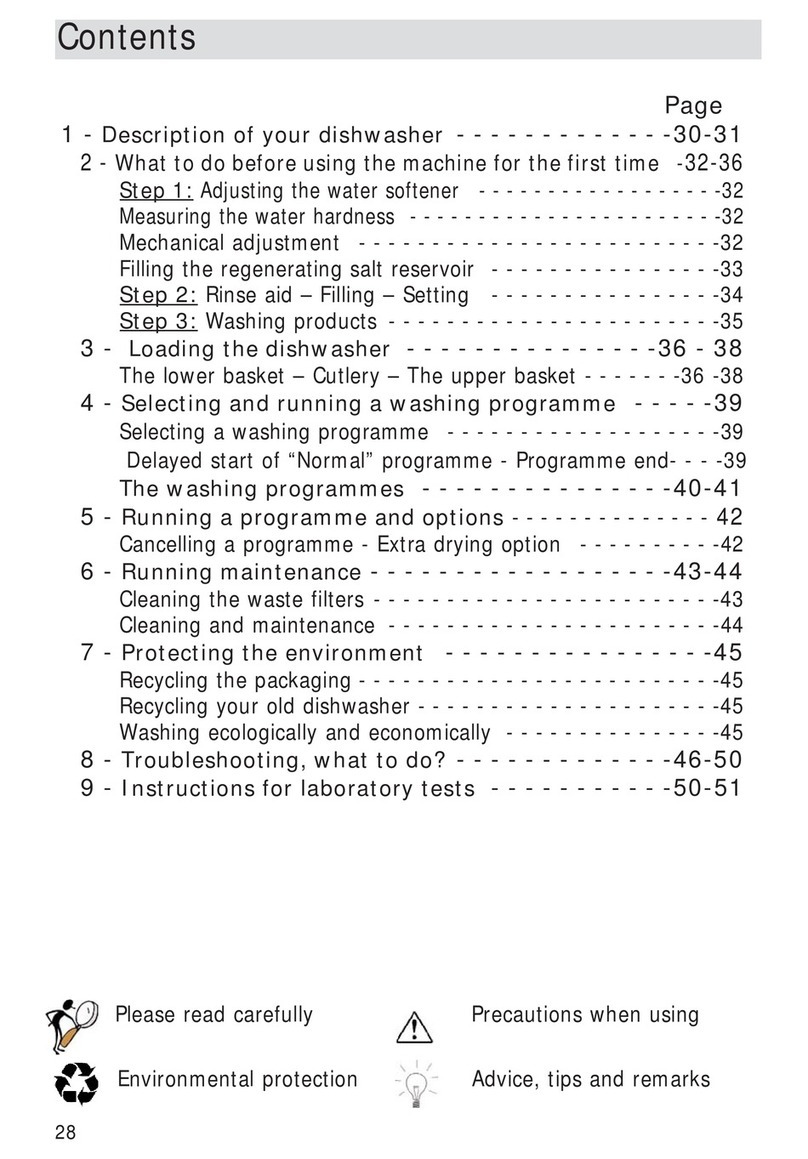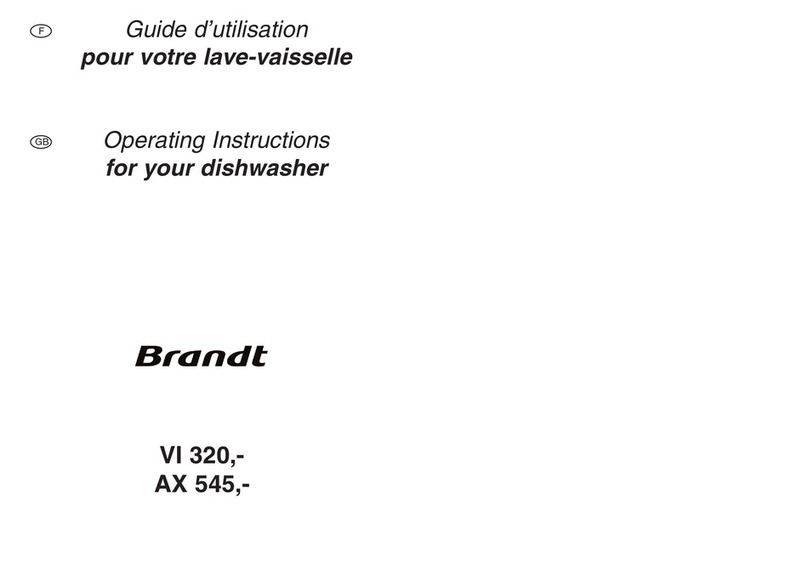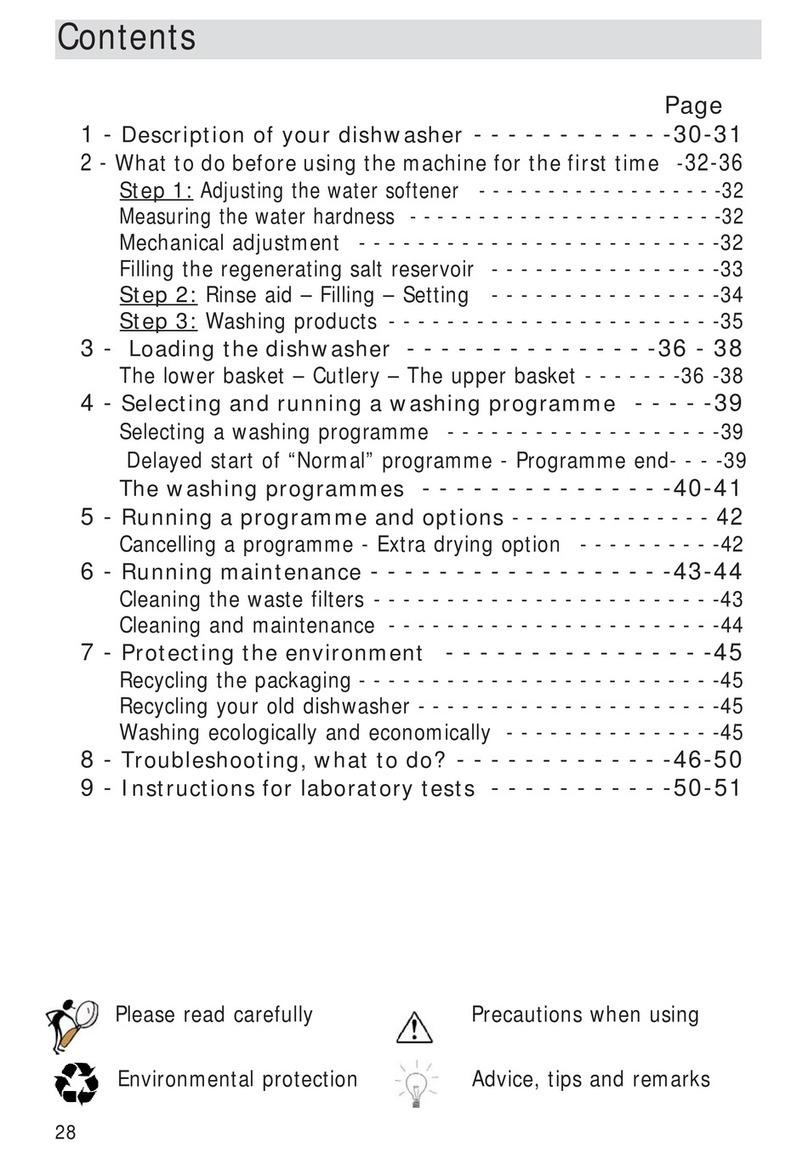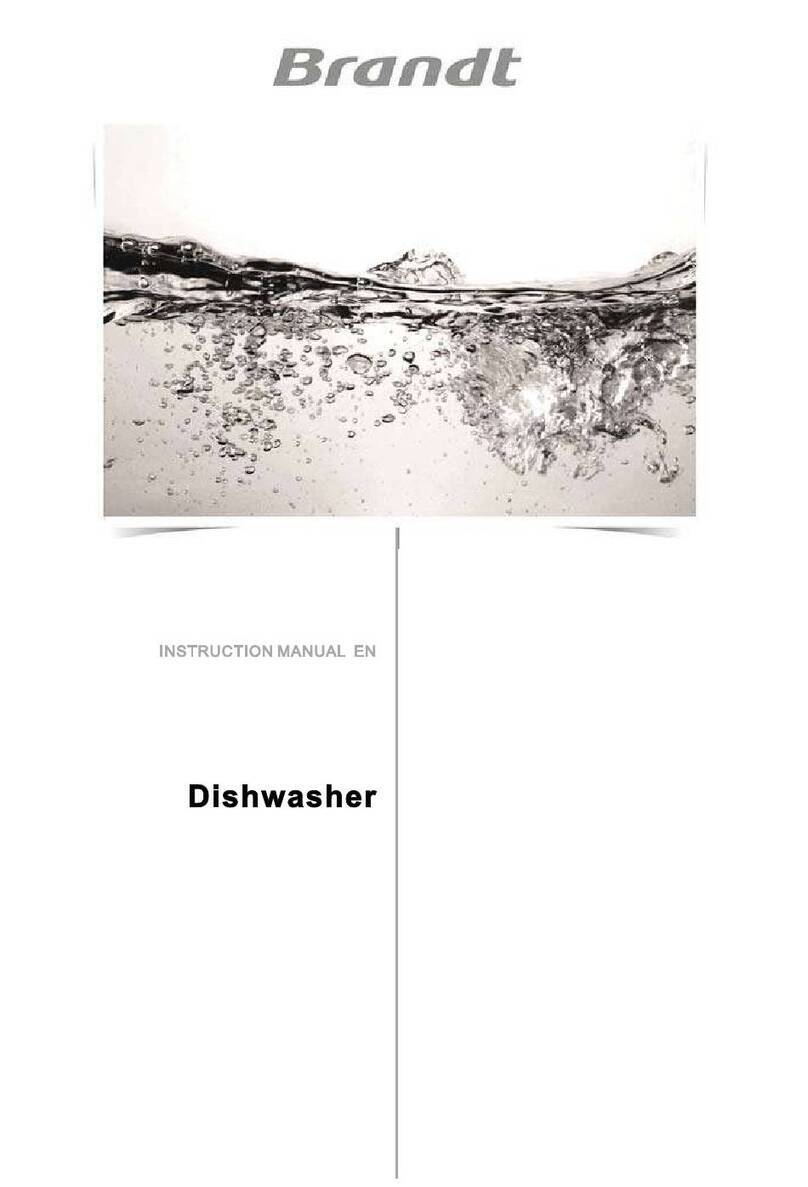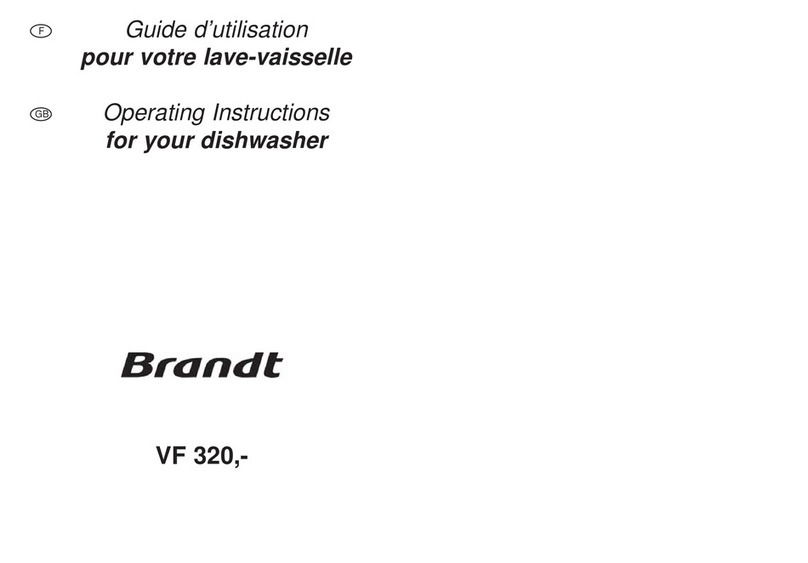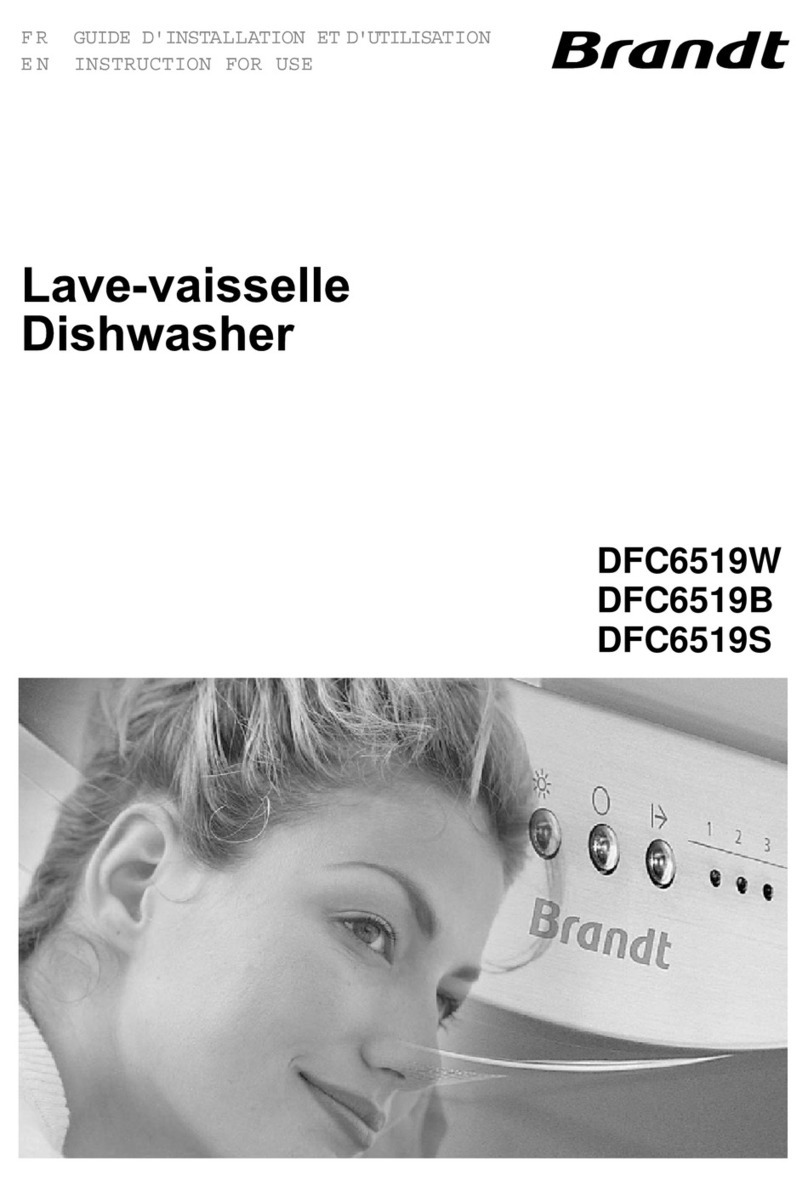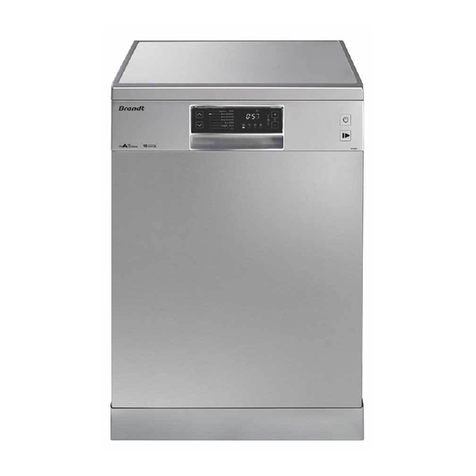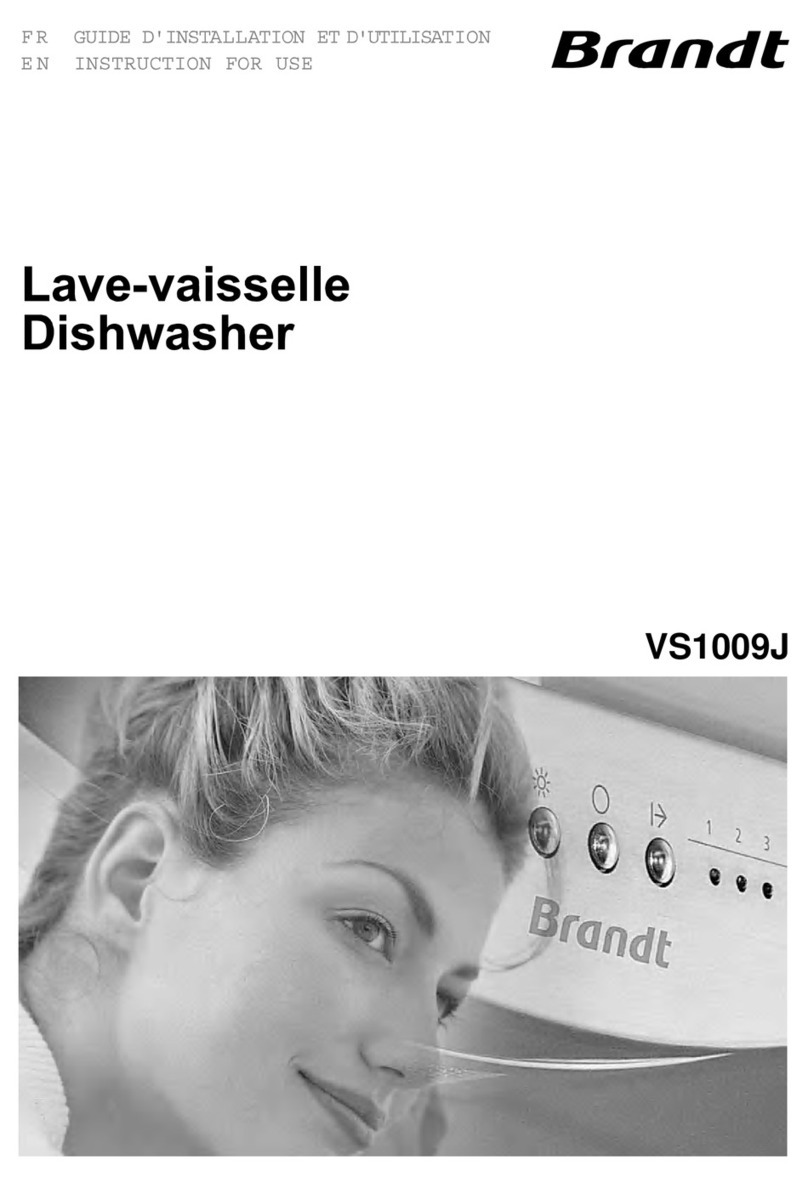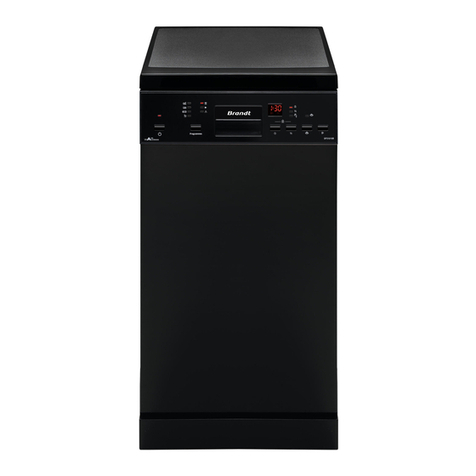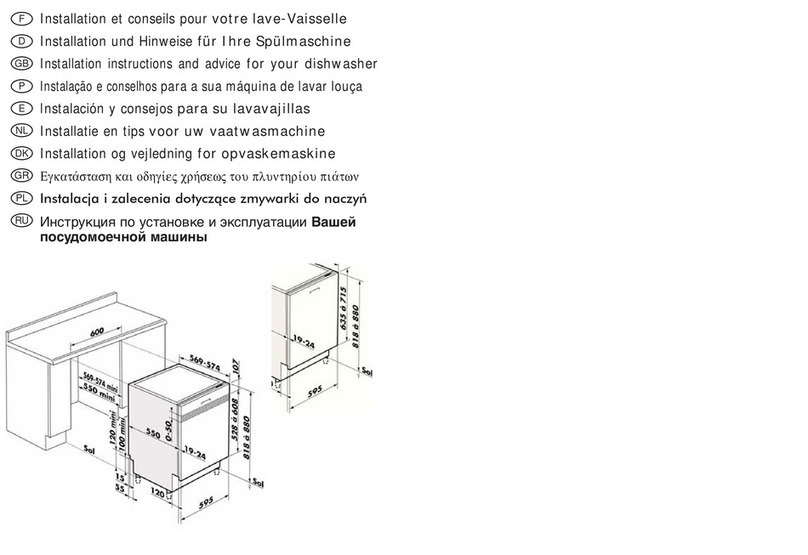
Reviewing the section on troubleshooting Tips will help
you solve some common problems by yourself.
Dear Cu stomer,
Please carefully read this manual bef ore using the
dishwasher, it will help you use and maintain the
dishwasher properly.
Pass it on to any sub sequent owner of the appliance.
This manual con tains sections on safe ty Instru ctions,
Operating Instru ction s, Installation Instruc tion s and
Trou bleshooting Tips, etc.
The man ufacturer, following a policy of constant
dev elopment and updating of the product, may
make m odifications w itho ut giving prior notice.
If lost or out-of-d ate, you can receive a new user
manual from the manufacturer or responsible
vendor.
Keep this manual for future reference.
If you cannot solve the problems by yourself,
please ask for help from a pr ofessional technician.
Dishw asher Features.................................... ........6
A Water Softe ne r... .... .... ..... .... .... ..... .... .... ...........7、
................................... ............... 12
Recommendation s for loading and unloading
the dishwas her
Filter System.......................................................16
Caring for the Dishwasher..................... ..............17.
B Loading the Salt into the Softener......................8、
C Filling the Rinse Aid Dispenser......................... 8、
D Function of Dete rgent ......................................9、
Loading the upper ....................................13Basket
Loa ding the Lower ............................. .......13Basket
Wash Cycle Table................................................14
Turning on the Appliance.....................................14
...... ..................15
Changing the Program mid-cycle ..
At the en d o f the Wash Cycle........ ........................15
Befo re calling for service........................... ..........25.
Error codes.................................... ...................26.
Technical information.............................. ..........27..
Cont rol Panel.. ............... ............... ............... .........6
Installation preparation.................................. .....18
........19Aesthetic panel's dimensions and installation
Ten sion adjustment of the door spring...................21
Connection of drain hoses.............................. .....21
Dishwasher installation steps......................... .....22
About Electricity Connecting................................23
Cold Water Connection.................................. .....24
